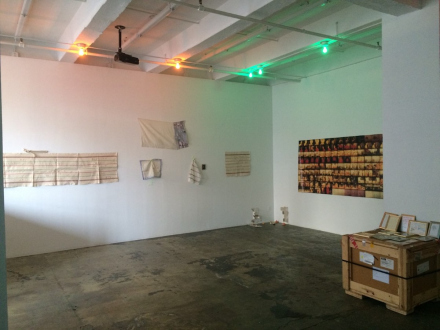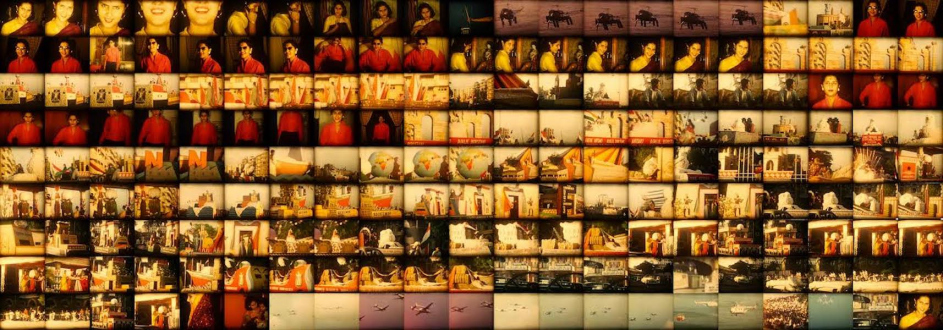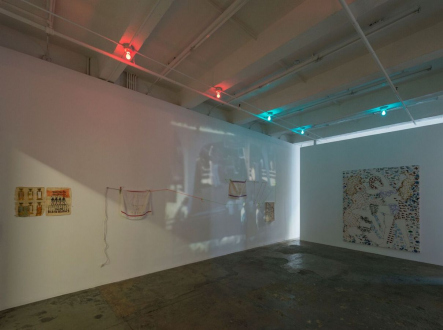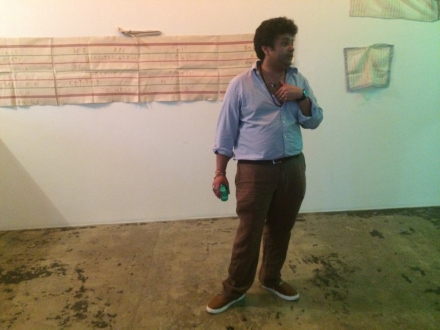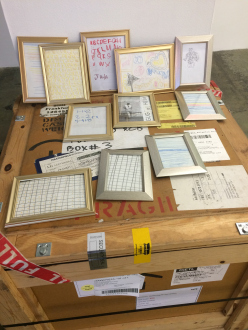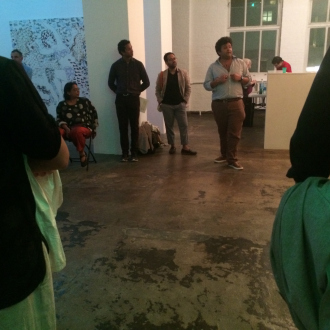Clark House Initiative – One day Pop-Up Show & Performance Lecture (Works)
Selected Works
Clark House Initiative
Clark House Initiative – One day Pop-Up Show & Performance Lecture Press Release
On Tuesday October 18, Thomas Erben Gallery will host a day-long exhibition culminating in a talk with Sumesh Sharma of the Clark House Initiative, a Bombay-based curatorial collective. Acting as an artist, Clark House addresses questions of distribution, global capital, aesthetics, modernist aspirations, and conceptual practices. The collective investigates how linear art histories might be inverted for our benefit. The talk tracks cotton, seeking its relationship to object making, pattern-decisions, and questions of distribution.
In 1960, Gamal Abdel-Nasser, President of the United Arab Republic of Egypt and Syria, visited Bombay to inaugurate the Egyptian and Syrian Cotton Festival. Despite the torrential rains on the day of the parade, the floats of the U.A.R. stood out with their brightly colored materials. Cotton featured heavily alongside plaster pyramids and cardboard renditions of the Socialist Industrial Revolution. These floats were sponsored by various international businesses, pointing towards the French and English colonial interests at play. These corporate sponsors were predominantly shipping companies founded by European powers, who, moving out of their own seas in search of commodities, had ended up in India.
For many decades, Bombay had the power to set cotton prices as far away as North America. Cotton was hedged, speculated, sold, and optioned by telegraph and telephone from the other side of the globe. Workers migrated into cities to work in mills, which paid low wages and accumulated wealth among just a few families. Trade unions arose in response, though in the 1970s these were crushed by the rise of an Ultra-Nationalist party in the Bombay City Council. The mills were replaced by shopping malls and gated upper-middle class apartment blocks.
Indian artisanship was undercut by the mass-production of cotton in Manchester. The rough cotton textile that came from Britain, known in India as ManjarPatta, is now produced in the power-looms of Bombay’s suburb Bhiwandi. French Muslin, known as métis bleu, also posed a challenge. A fine cloth of exemplary quality, métis was used for numerous luxury products. The métis pattern of blue stripes is now associated with both lingerie and nautical motifs. The pattern also appears on shirts sold at the Handloom House, a general store that was later acquired by the Indian government to give small businesses and independent weavers a site for collaboration and distribution.
16mm, digital video, screen shots, Facebook images, printed faux-silk: the same image can be arranged and reprinted, un-authored and re-represented. Clark House’s projects involve multiple artists and collaborators working in solidarity with the forgotten artisans, assistants, researchers, hawkers, carpenters, tailors, and fabricators. In Bombay, many unauthorized small businesses survive alongside large corporations. In a similar manner, Clark House is where we gather to enact a collective act.
Clark House will like to thank CAMP specially Shaina Anand & Ashok Sukumaran with whom the collective has collaborated on projects and in doing so has been able to conceptualize and produce as artists. The video archive from which we procured the screen shots for the saree was digitized by CAMP in 2014 using 16mm video reels in the Clark House office archive. Last year we worked with CAMP on a large cyanotype map ‘ Country of the Sea’, at that juncture we came to voice our common concerns as an aesthetic. Though Clark House as an artist union celebrates individual voices, artist collaborations are found in every show, at Thomas Erben we show for the first time works drawn up together. Ashok Sukumaran once did a solo project at the Thomas Erben gallery, Clark House debuts with its first collective exhibition purposefully in the same space.
